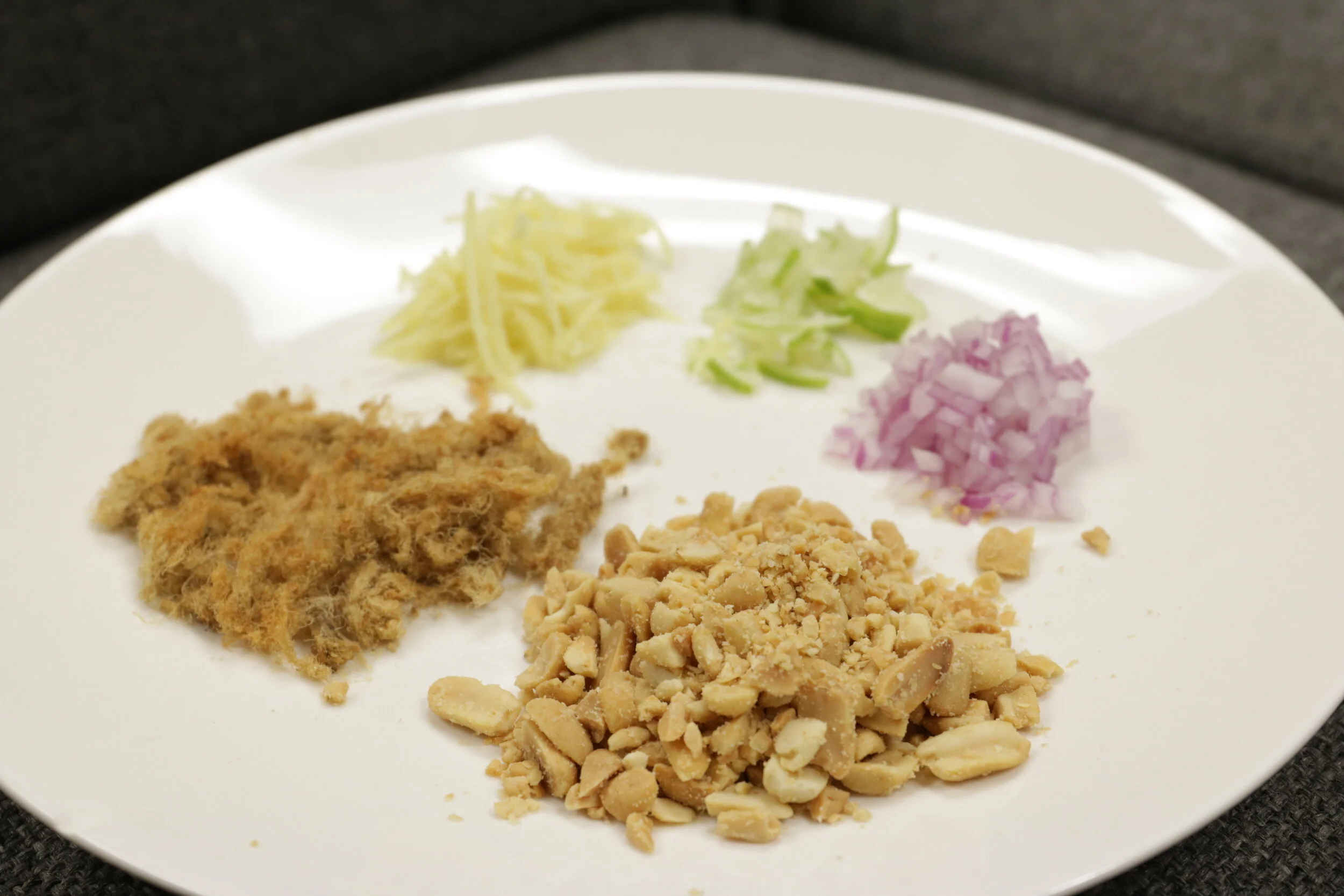Miang Kham
By Trin Kitisoontornpong
After moving to the United States nearly a decade ago, I spent much of my time listening to my mother reminiscing about the spicy, sweet, savory, and umami-rich snack wrapped in fragrant betel leaves. The essential ingredients such as high quality dried shrimp and betel leaves are practically impossible to find here in the U.S. When we stumbled upon a small Thai restaurant in Manhattan that serves a derived version of miang kham called miang kana, we were ecstatic. While it may not be exactly the same, this meaty simplified version of miang kham managed to satisfy my mother’s craving.
Hailing from Northern Thailand, miang kham made its way to the palace of Bangkok during the late 19th century, brought along by a princess who was destined to marry the young King. Soon after, this traditional one-bite wonder became popular across Thailand and abroad.
Miang kham features an assortment of ingredients and preparation techniques unique to Southeast Asia such as dried shrimp, betel leaves, lime wedge, and toasted shredded coconut. All of which are individually laid on the plate accompanied by sweet palm sugar sauce. Eaten in a similar manner to the famous Vietnamese nam neung, a betel leaf is folded into a cup and filled with whatever ingredients you like before being topped with sweet sauce. The sweetness of the sauce balances beautifully with the umami-rich saltiness of the dried shrimp. Fresh chili, onion, and garlic add refreshing spices to the sweet and salty bites. The toasted coconut gives a smoky aroma that mellows down the intense flavors of the fresh ingredients. All of this is followed by the intense arugula-like fragrance of the betel leaf and the wedge of lime that cleanses your palate.
This version of miang kham is inspired by miang kana, a dish on the secret menu of the famous New York City restaurant, Wondee Siam. The elusive betel leaf is replaced with either kana, or young Chinese broccoli leaf, or lettuce leaf, and the dried shrimps are substituted with dried shredded pork. While the pre-mixed version may not allow for the same customization found in its traditional form, the dish is both convenient and yummy-- a perfect way to introduce such a unique snack to people who’ve never tried miang kham before.
Ingredients:
2 Teaspoons of Fish Sauce
3 Teaspoons of Lime Juice
2 Teaspoons of Sugar*
1 Finely Cubed Medium Red Onion
2 Tablespoon of Finely Julienned Ginger
Half Young Fresh Lime Finely Cubed**
2 Minced Thai Chilis
4 Tablespoon of Crushed, Toasted Peanuts
3 Cups of Dried Shredded Pork
Romaine Lettuce
Directions:
In a small bowl, mix together the sugar and fish sauce until the sugar is fully dissolved. Then add the lime juice.
Add the red onion, ginger, chopped lime, and the Thai chili to the sauce and stir to combine.
Preheat the oven to 325 ℉. Spread the shredded pork thinly and evenly on the baking tray and place it in the middle rack of the oven for 10 min. ***
Mix the sauce with the roasted pork. Flavor to taste with the lime juice, sugar, and fish sauce mixture. The concoction should be sweet with refreshing spiciness from herbs and lime.
To prepare the lettuce leaf, cut the bottom portion of the lettuce head to separate it into individual leaves. Clean them thoroughly. As only the leafy green part is needed, the lower white portion which is composed mostly of stem can be removed. ****
Enjoy this modern take on a traditional Thai recipe by folding the lettuce into a cone shape and filling it to your desire.
Notes:
*Brown sugar or palm sugar will make for better sauce due to its molasses flavor, but white sugar will also work
**Young lime tends to have thinner and softer skin which is lighter in color. Choose lime with light green skin with a hint of yellow pigment. If young lime is not available, normal lime can also be used by removing the outermost layer of the skin using Microplane. ***Keep an eye on the baking tray and remove it from the oven immediately after turning crispy as it will burn quickly if not monitored
****If prepared with Chinese broccoli leaf, remove the stem all the way up to the bottom-most portion of the leaf.


